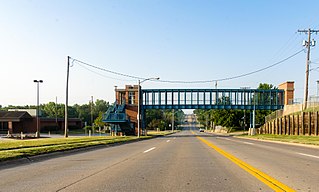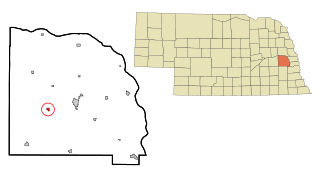
Cedar Creek is a village in Cass County, Nebraska, United States. The population was 465 at the 2020 census.

Eagle is a village in southwest Cass County, Nebraska, United States. As of the 2020 census, the village population was 1,065.

Elmwood is a village in southeast Cass County, Nebraska, United States. The population was 654 at the 2020 census.

Greenwood is a village in northwest Cass County, Nebraska, United States. The population was 595 at the 2020 census.

Louisville is a city in northern Cass County, Nebraska, United States. The population was 1,319 at the 2020 census.

Manley is a village in Cass County, Nebraska, United States. The population was 167 at the 2020 census.

Murray is a village in Cass County, Nebraska, United States. The population was 480 at the 2020 census.

Boys Town is a village in Douglas County, Nebraska, United States. The population was 410 at the 2020 census. Boys Town is an enclave and a suburb of Omaha.

Waterloo is a village in Douglas County, Nebraska, United States. The population was 935 at the 2020 census.

Beaver City is a city in Furnas County, on the southern border of Nebraska, United States. The population was 609 at the 2010 census. It is the county seat of Furnas County.

Burwell is a city in Garfield County, Nebraska, United States. The population was 1,210 at the 2010 census. It is the county seat of Garfield County.

Grant is a city and county seat of Perkins County, Nebraska, United States. The population was 1,165 at the 2010 census.

La Vista is a city in Sarpy County, Nebraska, United States. The population was 16,746 at the 2020 census, making it the 12th most populous city in Nebraska. The city was incorporated on February 23, 1960.

Weston is a village in Saunders County, Nebraska, United States. The population was 250 at the 2020 census.

Seward is a city and county seat of Seward County, Nebraska, United States. The population was 6,964 at the 2010 census. Seward is part of the Lincoln, Nebraska Metropolitan Statistical Area.

Fort Calhoun is a city in Washington County, Nebraska, United States. The population was 1,108 at the 2020 census. The city includes Fort Atkinson, the first fort built west of the Missouri River.

Carroll is a village in Wayne County, Nebraska, United States. The population was 193 at the 2020 census.

Hoskins is a village in Wayne County, Nebraska, United States. The population was 267 at the 2020 census.

Winside is a village in Wayne County, Nebraska, United States. The population was 381 at the 2020 census.

Wakefield is a city in Dixon and Wayne Counties in the State of Nebraska. The population was 1,451 at the 2010 census.






















